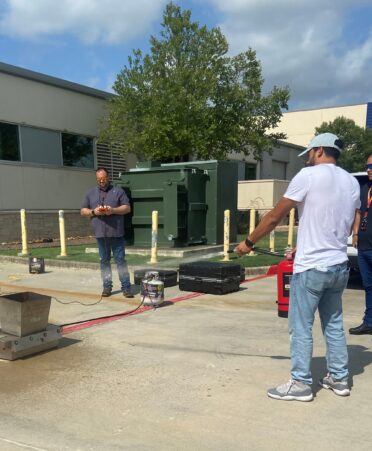Summary
From campfires and grilling to wildfires, being prepared to handle and control fire is an essential skill for both the workplace and the home.
(ROSENBERG, Texas) – During the heat of summer, fires become a common occurrence. From campfires and grilling to wildfires, being prepared to handle and control fire is an essential skill for both the workplace and the home.
In fact, most safety roles within the workforce require competency in regard to fire safety, with personnel needing functional knowledge of the various types of fire extinguishers, the fire hazards present at the work location, and familiarity with National Fire Protection Association labeling.
Andrea Skinner-Creeks, lead instructor for the Occupational Safety and Environmental Compliance program at Texas State Technical College’s Fort Bend County campus, recently discussed some basic practices and strategies to being safe around fire.
How does a workplace prevent and prepare for a fire?
Preparation is key in fire prevention. You first want to map out exit routes and ensure that exit signs are visible — and illuminated — to comply with regulatory guidance. Fire drills are vital to ensure that employees become acclimated to escape routes and to determine if there are any blocked means of egress.
Familiarization with written regulatory guidance, understanding the wind directions, point of contacts, and a designated contingency team are also essential. Inspections of electrical cords, hazardous materials, nuisance dust and fire extinguishers are key components in fire prevention.
What tools, instructions and techniques are commonplace in the event of a fire?
One of the first reactions in the fight-or-flight response to fires would be to break the windows open. This should be avoided as oxygen fuels a fire, thus making it far more difficult to contain and escape. We want to avoid introducing oxygen into the atmosphere. This is what the “fire triangle” teaches you. The three elements in the triangle are oxygen, heat and fuel. Never use water for oil fires. Never overload circuits or plug-ins.
What tips would you give in order to be prepared for a fire in a home or personal living space?
Replace any frayed cords — phone charger cords, extension cords, cords that a pet chews on, etc. Fire drills should be practiced at home as well, not just in the workplace. Ensure that fire alarms are functional. It is best to avoid cooking while excessively tired. Multitasking while cooking is also a potential hazard.
Keep junk drawers free from loose batteries as they could potentially start a fire if they come into contact with certain materials. Have a fire blanket and a class ABC fire extinguisher as well.
TSTC offers an Associate of Applied Science degree and certificates of completion in Occupational Safety and Environmental Compliance at the Abilene, Fort Bend County and Waco campuses.
According to onetonline.org, occupational health and safety technicians in Texas can earn a median salary of $52,460. The website projected that there would be a 22% increase in the number of such jobs in the state from 2020 to 2030.
Registration for TSTC’s fall semester is underway. For more information, go to tstc.edu.
